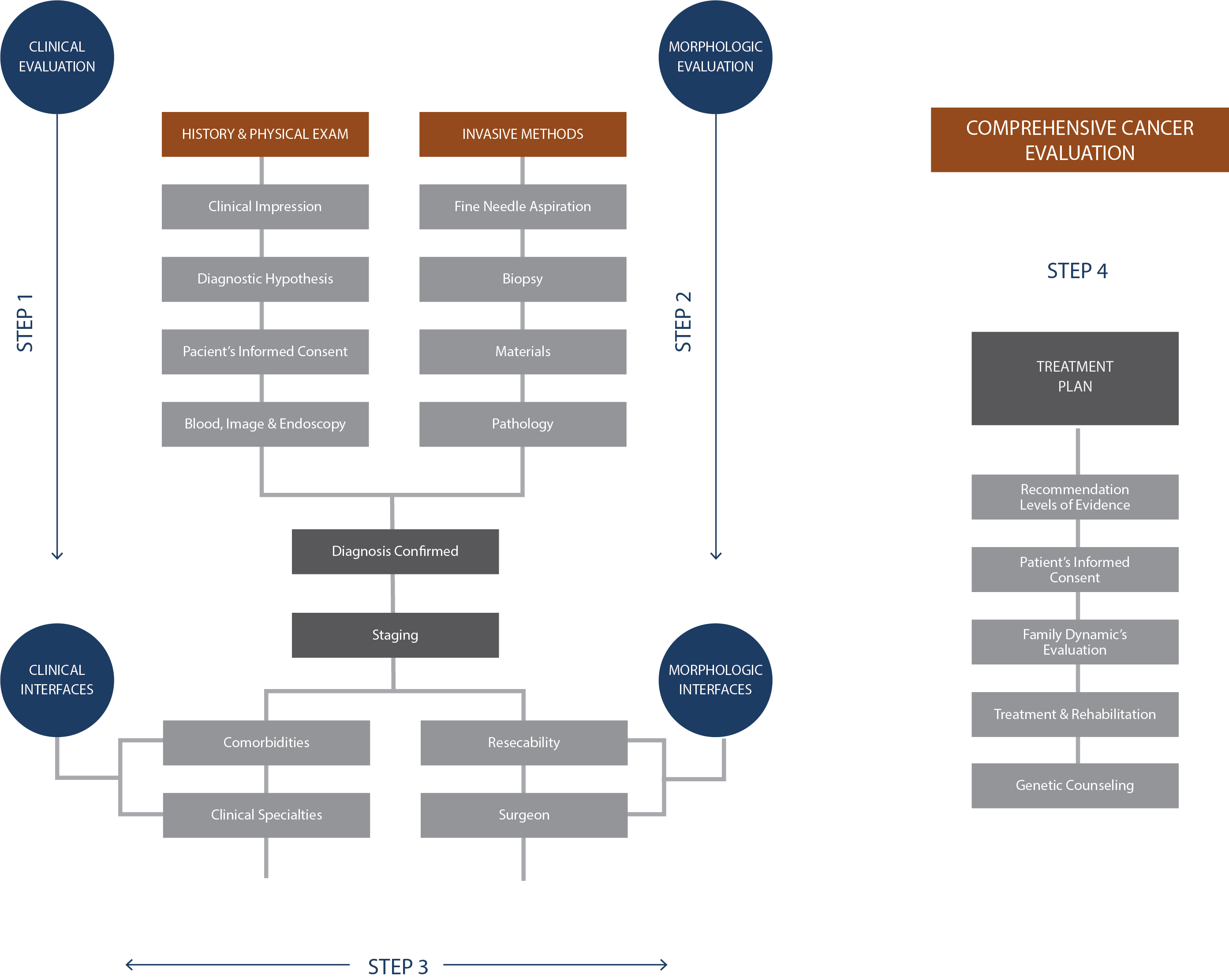Care Algorithm
A care algorithm provides an overview of all steps involved in a comprehensive clinical assessment. It shows how physicians organize cancer care. The figure shows the care algorithm including four steps:
In the first step, the assistant physician provides a detailed description of the history and physical examination, including imaging tests, reports of comorbidities and previous recommendations given to the patient.
The second step includes data of invasive diagnostic methods such as fine needle aspiration biopsy, tissue biopsy and/or surgery, review of the pathologic exam, immunohistochemistry and molecular markers.
In the third step, the physician integrates clinical, morphological and molecular data, which leads to the diagnosis. At this point, an assessment of the extent of the disease (staging) is also performed. Here, the prognosis is discussed with the patient and families.
The fourth step consists of the medical recommendation, indicating a treatment plan, describing its levels of evidence, risks and benefits (therapeutic index). When a hereditary risk is identified, the doctor recommends genetic counseling.
Throughout the process, the patient is informed about the findings obtained at each step. The doctor provides cognitive interventions, using simple language, accessible to the patient and their family. Multimedia resources can be used to improve understanding of what is being explained. The algorithm organizes the care program for shared decision-making.
The care algorithm shows the steps of medical reasoning in dealing with the disease

